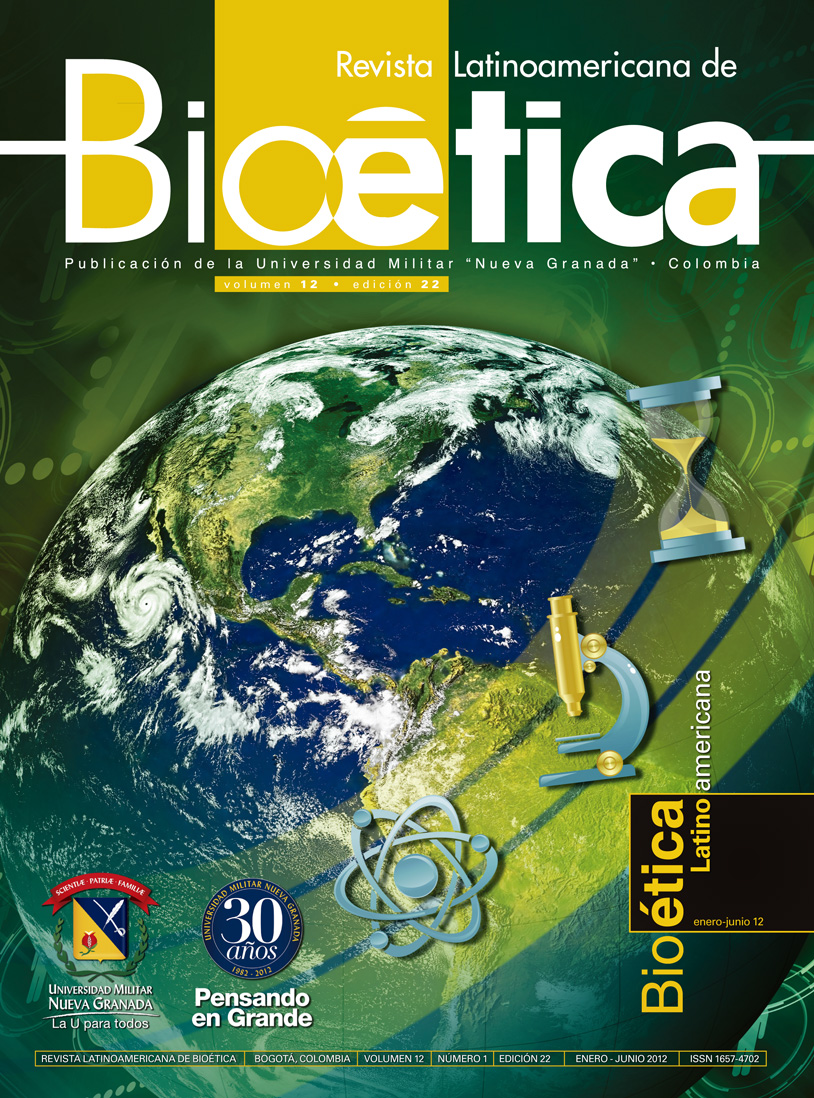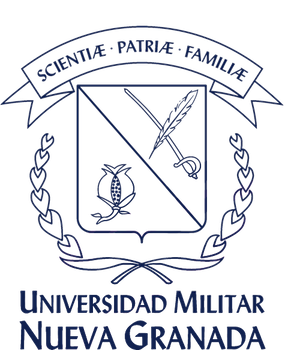Crisis de la bioética y la bioética en medio de la crisis
Resumen
La bioética se encuentra actualmente en medio de una profunda crisis. Una revisión del estado del arte muestra que esta disciplina ha venido encontrando una serie de obstáculos tanto con respecto a su significado social como con respecto a su propio estatuto científico y epistemológico. Al mismo tiempo, los seres humanos y las sociedades se encuentran inmersas en una serie de crisis entrelazadas entre sí. Este artículo sostiene que ambos fenómenos se hallan profundamente relacionados y estudia las razones y las consecuencias de ello.
Descargas
Disciplinas:
Bioética, Humanidades, Ciencias Sociales, Ciencias Médicas, Ambiente y sostenibilidadLenguajes:
enReferencias bibliográficas
• ENGELHARDT, H. T., JR., (2011). “Confronting Moral Pluralism in Posttraditional Western Societies: Bioethics Critically Reassessed”, in: Journal of Medicine and Philosophy, 36, pp. 243–260
• EPSTEIN, M., (2010). “How Will the Economic Downturn Affect Academic Bioethics?”, in: Bioethics, Volume 24, Number 5, pp. 226–233
• FAN, R., (2011). (2011). “The Confucian bioethics of surrogate decision making: Its communitarian roots”, in: Theor Med Bioeth, 32, pp. 301–313
• FAUNCE, T. A., NASU, H., (2009). “Normative Foundations of Technology Transfer and Transnational Benefit Principles in the UNESCO Universal Declaration on Bioethics and Human Rights”, in: Journal of Medicine and Philosophy, 34, pp. 296–321
• GAINES, A. D., JUENGST, E. T., (2008). “Origin Myths in Bioethics: Constructing Sources, Motives and Reason in Bioethic(s)”, in: Cult Med Psychiatry, 32, pp. 303–327
• HELLSTEN, S. K., (2008). “Global Bioethics: Utopia or Reality?”, in: Developing World Bioethics, Volume 8, Number 2, pp. 70–81
• HERRERA, C., (2008). “Is It Time for Bioethics To Go Empirical?”, in: Bioethics, Volume 22, Number 3, pp. 137–146
• HOLLAND, S., (2011). “The Virtue Ethics Approach to Bioethics”, in: Bioethics, Volume 25, Number 4, pp. 192–201
• ILTIS, A. S., (2006). “Look Who’s Talking: The Interdisciplinarity of Bioethics and the Implications for Bioethics Education”, in: Journal of Medicine and Philosophy, 31, pp. 629–641
• IVES, J. and DRAPER, H., (2009). “Appropriate Methodologies for Empirical Bioethics: It’s All Relative” in: Bioethics, Volume 23, Number 4, pp 249–258
• IVES, J., and DUNN, M., (2010). “Who’s Arguing? A Call for Reflexivity in Bioethics”, in: Bioethics, Volume 24, Number 5, pp. 256–265
• JAFAREY, A. M., and MOAZAM, F., (2010). ‘‘Indigenizing’’ Bioethics: The First Center for Bioethics in Pakistan”, in: Cambridge Quarterly of Healthcare Ethics, 19, pp. 353–362
• KOPELMAN, L. M., (2006). “Bioethics as a Second-Order Discipline: Who Is Not a Bioethicist?”, in: Journal of Medicine and Philosophy, 31, pp. 601–628
• KUHN, TH., (1996). The Structure of Scientific Revolutions. Chicago: The University of Chicago Press
• LONDON, A. J., (2006). “What Is Social and Global Justice to Bioethics or Bioethics to Social and Global Justice?”, in: Hastings Center Report, July-August, p. 3
• LOVY, A., PASKHOVER, B., and TRACHTMAN, H., (2010). “Teaching Bioethics: The Tale of a “Soft” Science in a Hard World”, in: Teaching and Learning in Medicine, 22, (4), pp. 319–322
• MCCULLOUGH, L. B., (2002). “Philosophical Challenges in Teaching Bioethics: The Importance of Professional Medical Ethics and its History for Bioethics”, in: Journal of Medicine and Philosophy, Vol. 27, No. 4, pp. 395-402
• MACKLIN, R., (2010). “The Death of Bioethics (As We Once Knew It)”, in: Bioethics, Volume 24, Number 5, pp. 211–217
• MACNEILL, P. U., & FERRAN, B., (2011). “Art and Bioethics: Shifts in Understanding Across Genres”, in: Bioethical Inquiry, 8, pp. 71–85
• MAGNUS, D., (2008). “The Green Revolution in Bioethics”, in: The American Journal of Bioethics, 8, (8), pp. 1–2
• MASTER, Z., (2011). “The Responsible Conduct in Bioethics”, in: Accountability in Research, 18, pp. 102–119
• METZ, T., (2010). “An African Theory of Bioethics: Reply to Macpherson and Macklin”, in: Developing World Bioethics, Volume 10, Number 3, pp. 158–163
• MOORE, A., (2010). “Public Bioethics and Deliberative Democracy”, in: Political Studies, vol 58, pp. 715–730
• MORENO, J. D., (2005). “The End of the Great Bioethics Compromise”, in: Hastings Report Center, January-February, pp. 14-15
• POTTER, V. R., (1970). “Bioethics, science of survival”, in: Biology and medicine, 14: 127-53
• POTTER, V. R. (1971). Bioethics: Bridge to the Future. Englewood Cliffs: N.J., Prentice-Hall
• POTTER, V. R. (1988). Global Bioethics: Building on the Leopold Legacy. East Lansing, Michigan State University Press
• RACINE, E., (2008). “Which Naturalism for Bioethics? A Defense of Moderate (Pragmatic) Naturalism”, in: Bioethics, Volume 22, Number 2, pp. 92–100
• RENNIE, S., and MUPENDA, B., (2008). “Living Apart Together: Reflections on Bioethics, Global Inequality and Social Justice”, in: Philosophy, Ethics, and Humanities in Medicine, 3, p. 25; http://www.peh-med.com/content/3/1/25
• SHAPIRO, R. S., and LAYDE, P. M., (2008). “Integrating Bioethics into Clinical and Translational Science Research: A Roadmap”, in: www.ctsjournal.com, Volume 1, Issue 1, pp. 67-70
• SHARP, R. R., SCOTT,A. L., LANDY, D. C., KICKLIGHTER, L. A., (2008). “Who’s Buying Bioethics Research?”, in: The American Journal of Bioethics, 8, (8), pp. 54–58
• SCHER, S., and KOZLOWSKA, K., (2011). “The Clinician’s Voice and The Limits of Bioethics”, in: The Australian and New Zealand Journal of Family Therapy, 15, Volume 32, Number 1, pp. 15-32
• SHERWIN, S., (2011). “Looking Backwards, Looking Forward: Hopes for Bioethics’ Next Twenty-Five Years”, in: Bioethics, Volume 25, Number 2, pp. 75–82
• SCHÜKLENK, U., (2006). “Ethics in Bioethics”, in: Bioethics, Volume 20, Number 5, p. Iii (Editorial)
• SCHÜKLENK, U., (2011). “Publishing Bioethics and Bioethics – Reflections on Academic Publishing by a Journal Editor”, in: Bioethics, Volume 25, Number 2, pp. 57–61
• SOLOMON, D., (2005). “Christian Bioethics, Secular Bioethics, and the Claim to Cultural Authority”, in: Christian Bioethics, 11, pp. 349–359
• STEMPSEY, W. E., (2011). “Religion and Bioethics: Can We Talk?”, in: Bioethical Inquiry, 8, pp. 339–350
• TEN HAVE, H. A. M. J., (2011). “Global Bioethics and Communitarism”, in: Theor Med Bioeth, 32, pp. 315–326
• TROTTER, F., (2009). “The UNESCO Declaration on Bioethics and Human Rights: A Canon for the Ages?”, in: Journal of Medicine and Philosophy, 34, pp. 195–203
• UNESCO, (2005). Universal Declaration on Biethics and Human Rights. http://unesdoc.unesco.org/images/0014/001461/ 146180e.pdf
• YADAVENDU, V. K., and Kumar, D., (2009). “Bioethics, Medicine and Society – A Philosophical Inquiry”, in: Current Science, vol. 97, no. 8, 25 October, pp. 1128-1136
• TONG, R., (2008). “Practice Precedes Theory: Doing Bioethics “Naturally” Is There an Ethicist in the House?: On the Cutting Edge of Bioethics”, in: J Med Humanit, 29, pp. 133–135
• VÁSQUEZ, I. A., (2000). El precio biológico de la civilización, el estrés. Madrid: Celeste
• WALLERSTEIN, I., (Ed.) (1996). Open the Social Sciences: Report of the Gulbenkian Commission on the Restructururing of the Social Sciences. Stanford: Stanford University Press.












